Introduction
Transport and handling of wild animals gives rise to concern about their welfare. Specific attention has been given to the duration of animal transport, and maximum journey duration are used in legislation that seek to minimize any negative impact of transport on animal welfare. We identify four aspects of animal transport, which have increasing impact on welfare as transport duration increases. These relate to
- The physiological and clinical state of the animal before transport; and during transport too
- Feeding and watering;
- Rest and
- Thermal environment. It is thus not journey duration per but these associated negative aspects that are the cause of compromised welfare.
Transport of Wild Animals
The transport of wild animals is to be undertaken with great care and cautions. The following information may be of useful with regard to the transport of wild animals. Reasons for transport of wild animals Animal exchange programmes, Gift by government, Research purposes, to facilitate out breeding, for therapeutic applications, Confiscated wild animals may need transport
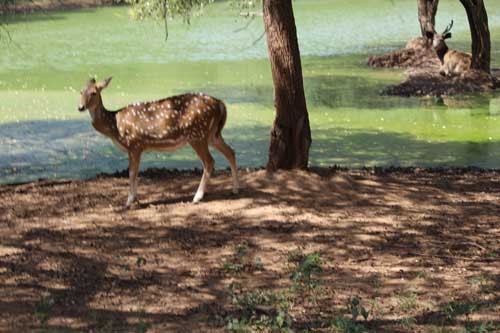
Capture Myopathy
This condition has many names: exertional, transport, stress, degenerative myopathy and white muscle disease. There are a lot of myths and misinformation about this condition. The first myth to destroy is that this is a condition seen only in marsupials. It affects all species- and is most widely recognized in hoofed animals such as deer. However, birds – such as long-legged water birds and raptors may also be affected. All ages and sexes are susceptible.
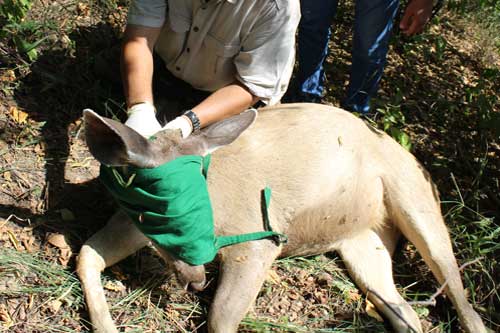
Pathogenesis
When the muscle is exerted (used) its metabolism changes from aerobic (uses oxygen) to anaerobic (uses stored energy in the muscles). This leads to the build-up of lactic acid causes acidosis. Lactic acid in the bloodstream drops the pH in the body, affecting heart output. If the heart does not pump oxygen to the muscle it starts to die. When the muscle dies over the next 7 days, it releases a product called myoglobin (breakdown product of muscle). Myoglobin damages the excretion part of the kidney (the renal tubule). Other organs are affected: the lungs become congested and bleed. The liver becomes swollen and pale.
Clinical Signs
It may occur in any muscle group in front and back legs or heart. It has been classified into four appearances.
- Hyper-acute: Very sudden onset with death often noted.
- Acute: From heart muscle necrosis and occurs over 2- 4 days.
- Sub–acute: kidney failure from the release of myoglobin.
- Chronic: die over 2-4 weeks due to heart failure and paralysis.
The range of clinical signs begin in the early stages as hyperthermia (body temperature is above normal, animal is hot, sweats, pants), trouble breathing, fast heart rate. The animal may become weak or have a stiff gait. Muscle tremors- either involving a few muscles or an entire muscle group may be seen. The animal may collapse and die.
Causes of Capture Myopathy
There are several situations that can cause Capture Myopathy. These include trapping, capture, transport and even simple restraint. In other words- humans cause this condition! However, it is also used successfully as a hunting tool by large carnivores such as dogs
White Muscle Disease Related To Capture Myopathy
Muscle is a pretty simple organ. All it can do when it is sick is to die! So white muscle disease, which is seen in calves due to a lack of vitamin E and selenium deficiency has the same appearance as Myopathy when you slice the muscle and look at it under a microscope.
Treatment
The bad news is that if you have an animal with clinical signs, its prognosis is poor. In other words, it is not going to get better. In other words, treatment is not effective and continuing to let the animal suffer becomes a welfare issue. The muscle has died. It cannot re-grow. This has an implication with the welfare of the animal then being treated, only to suffer horrible cramping, pain from failing kidneys, inability to breathe from congested lungs and then to die up to 1 month later. Field treatment in the hands of many experienced veterinarians has not been successful. However, in situations where it is recognized at the hyper-thermia stage, it is believed to be possible to treat it. Treatment is quite intensive and expensive. The first step is to sedate the animal. Although from a prevention perspective, this should have already been performed. Sedation with Valium may reduce anxiety and assist in muscle relaxation. The most important treatment for this condition is intravenous fluids e.g. with Hartman’s solution or 0.9% saline. Essentially, what you are treating is acute kidney failure. The goal of giving fluids is to:
- Improve the blood supply to the kidney.
- Dilute the damage that myoglobin does to the kidney.
- Dilute the lactic acid in the blood stream, thus improving heart function.
- Expand the blood volume and address the mechanisms of shock.
- Reverse the hyper-thermia.
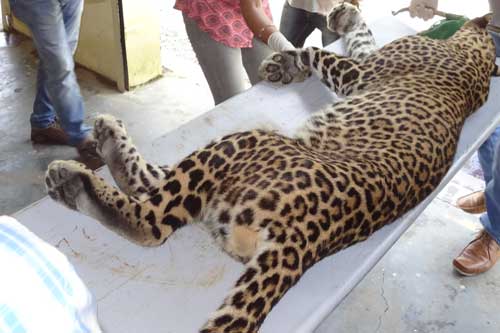
Another muscle relaxant that is used by zoos is Dantrolene. This is used in humans for a similar condition malignant hyperthermia. The drug is given intravenously within 6 hours of reconstitution. It can damage the liver and kidney. Cortisone can be used for its anti-inflammatory properties. It may also help to reverse hyperthermia. Vitamin E and selenium can be used. This comes as Selvite-E. The dose rate is 1 ml per 50 kg. It is given every 7 days under the skin. More frequently will harm the animal. Selenium works in the cell membrane as an antioxidant, and similarly, Vitamin E out of the cell.
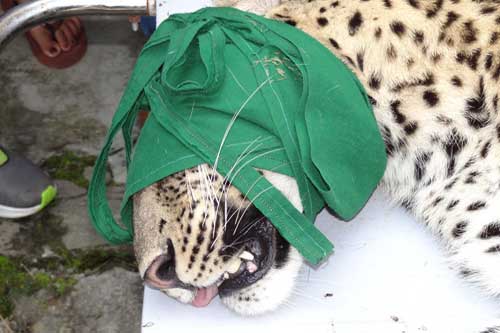
Prevention
This is the key to this condition as you cannot undo the damage, you want prevent it from occurring in the first instance. The animal’s life is in your hands. The goal is planning: plan the capture, plan to use sedation, plan what to do if something goes wrong. The method of capture needs to be well-planned, with sufficient people-power to quickly trap the animal. And that is the key- we do not chase macropods, we encourage them into a trap. Time spent observing the animal and the escape route it wants to follow, and then coordinating your movements is invaluable.
- Minimize the pursuit time- ideal is less than 3 minutes! After this, muscle enzymes are beginning to climb and the damage begins.
- Reduce struggling by covering eyes and placing the captured animal into a bag.
- Keep the human noise down. No dogs should be present.
- Reduce the amount of handling time and then release to a less stressful place as soon as possible.
- Sedation: Consider the use of Valium, azaperone (Stresnil for pigs), or fluphenazine (Modecate- a human antipsychotic used very successfully in zoos for translocation of animals but takes up to 3 days to start to work).
- Do not catch up animals when the ambient temperature is over 20°C. Do not leave a sedated animal in direct sunlight. Ensure that you keep the animal’s temperature down: good ventilation, damp cloths if required.
Handling and Physical Examination of Wild Animals
The wild animals may be handled mainly subsequent to the chemical immobilization, to the possible extent. Handling the live wild animal or the bird may perhaps leads to stress conditions for the concerned wild animal. During the handling of wild animals, one has bear it in mind that the wild animals should not be stressed too much because of the chances of stress based unfavorable responses in most of the multiple wild animal species.

Handling of Elephants
Sternal recumbency has to be avoided in case of elephants because this may cause more interference during the respiratory activities of these mega herbivores which lack pleura in general. Elephant hooks are used for the control of the elephants and however, its usage is banned in few places and the legal issues related to its usage are to be taken care of, promptly. Chaining of elephants with adequate pads to avoid the injuries may be carried out in one of the legs especially the hind limb and the other end of the chain is often tied to the peg or iron bar. If mild is the painful operation, the animal maybe sedated by xylazine. However, major operations causing severe pain are difficult to be carried out despite the usage of xylazine in the elephants, fora field related immobilization purpose. Elephants should not be handled to the possible extent without the assistance of mahout or the care taker of the elephant.
Handling of Ursids
Only the immature ursids may be handled by usage of nets. Taking adventurous activities during handling of ursids has to be avoided since it may cost the life of the handler. Always it is to be borne in mind that the bears have good stamina and power. More care is to be taken during the routine handling of these species.
Handling of Non–Human Primates
For rough individuals or for the adult non-human primates, the animals may be handled only after the chemical immobilization procedures. For infant ones, with care a towel may be wrapped around it and the arms may be held back. More care is to be taken to avoid the biting from the non-human primates. Rhesus macaques or langurs may cause severe injuries if one is careless in handling of these species. Gloves may be used in case of smaller non-human primates during the handling procedures. But, the gloves reduce the sensations of feelings over the animal and further, it is true that the gloves used during the handling procedures may not be able to prevent the biting activities of then on-human primate.
Handling of Pregnant Wild
Pregnant wild animals should not be handled at all in order to avoid the excitement based unfavorable events. Avoid transport of pregnant wild animal. Timely feeding and watering is a must while dealing with the pregnant wild animal whether it is a carnivore or herbivore or omnivore.
Watering and Feeding Of Wild Animals during Transport
The wild animals should not be watered too much during the transport. However, some quantity of water has to be provided and this is in order to avoid the development of dehydration status among the wild animals being transported. Similarly, the wild animals under transport should not be given stomach full of feed materials. If given fully, the feeds may cause some inconvenience to the animals during the transport of wild animal because of the possibilities of frequent movements of the vehicle or the container. Avoid any excitement causing activity to the wild animals during transport. Avoid the unnecessary handling of the wild animal during transport. Maintain calmness during the transport of the wild animals.
Handling of Reptiles
Poisonous snakes need to be handled with great care to avoid being bitten. More care is taken to utilize the suitable gadget for the handling of snakes. For example, the hooks with long handles are much used throughout the world to control and handle the snakes. During handling, adequate pressure is to be exerted to control the snakes’ head and however the pressure should not be given too much causing crushing of jaws. Hence, more care and experience are highly required in order to handle the snakes especially the poisonous snakes. Similarly, minimum three persons are required to handle the pythons. The python should never be handled alone. Transparent tubes with adequate holes facilitating the ventilation aspects are good to have a better control during the handling of snakes. Similarly, crocodiles may be handled with many persons. During the handling activities, the tail of the crocodile has to be restrained, in addition to the head. Further, the hind limbs may be tied together, in addition to the tying of fore limbs together. Lizard’s head needs to be controlled in addition to the control of limbs and body support may be given especially with the lengthy reptiles.
Handling of Birds
Support the body of the anseriformes like geese, duck under the arm and the head and neck of the bird should be supported by another hand. Avoid the carrying of birds like water fowl by wings alone since brachial paralysis may occur in such cases. If the bird is allowed to flap the wing during handling, then stress reactions may be severe in such birds. Hence, the wings and the legs have to be restrained first. During the handling of small birds, the sternum should not be covered because such activities may cause interference with the respiratory activities of the tiny aviary species.
Focus On Activities during Transport
Observation of gait: The gait is to be observed to rule out signs of pain, sprain, fracture, dislocation, foreign body, dullness etc. Movements of body regions, in general The movements of body regions maybe noticed during the resting activities of the wild animals. The movements may indicate some clues to the attending veterinarians in the zoo or zoological parks or zoological gardens.
Observation of feeding activity: Any change in the feeding activity may be noticed and may be linked with the possible clinical problem. Observation of defecation and urination activities This may help to rule out abnormalities pertaining to the gastro-intestinal as well as the urinary systems.
Miscellaneous
Any abnormal activities if noticed should be brought to notice. If the wild animal is having an intense degree of itching activities, one has to rule out the fungal or allergy causing factor.
Temperature: of the body temperature of the wild. Non contact thermometer may be used to measure animal during handling. If the wild animal has extreme high temperature, with hyper-thermia to a place with shades first take the concerned wild animal and start application of other therapeutic procedures.
Respiratory rate: The respiratory rate may be the concerned wild Heart rate estimated by mere observation without any excitement to animal species and observe the pattern of respiration also. If the wild animal is well controlled, heart rate may be estimated by using stethoscope.
Conclusion
Although animal transport of long duration is more likely to compromise animal welfare it is important to recognize that it is not journey duration but the associated negative aspects that are the cause of the observed welfare issues. Factors such as extreme temperatures and lack of food, water and rest are all exacerbated by the length of exposure, and thus, journey duration. These aspects are most likely solvable for many of wild animals Therefore, provided conditions are optimal, most healthy and fit animals could possibly be exposed to long transport duration without necessarily compromising their welfare. In contrast, animals in a poor state of fitness should not be transported at all.
|
The content of the articles are accurate and true to the best of the author’s knowledge. It is not meant to substitute for diagnosis, prognosis, treatment, prescription, or formal and individualized advice from a veterinary medical professional. Animals exhibiting signs and symptoms of distress should be seen by a veterinarian immediately. |



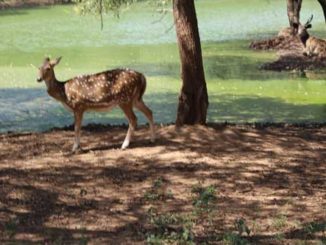
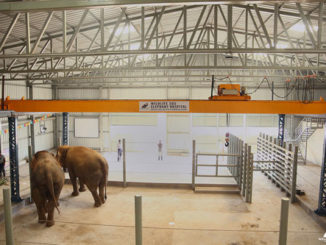

Be the first to comment